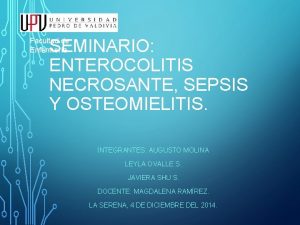Inpatient Management of Hirschsprung Associated Enterocolitis HAEC Treatment

- Slides: 1

Inpatient Management of Hirschsprung Associated Enterocolitis (HAEC) Treatment – The Benefits of Standardized Care Wendy Jo Svetanoff, MD MPH; Charlene Dekonenko, MD; Obiyo Osuchukwu, MD MPH; Tolulope A. Oyetunji, MD MPH; Pablo Aguayo, MD; Jason D. Fraser, MD; David Juang, MD; Charles Snyder, MD; Richard Hendrickson, MD; Shawn D. St. Peter, MD; Rebecca M. Rentea, MD Children’s Mercy Kansas City, Mo INTRODUCTION • Patients with Hirschsprung disease (HD) can develop Hirschsprung associated enterocolitis (HAEC) both before and after surgical repair. • Inpatient management is variable, including differences in type and length of treatment. • We developed an algorithm to standardized management of inpatient HAEC treatment. RESULTS Figure 1: HAEC Management Algorithm Demographics: • 62 episodes in 26 patients • 12 patients (46%) had more than one episode. • 88% male; 8% had Trisomy 21 • Median age at pull-through = 134 days (IQR 15, 285) • Transition zone: 50% in rectosigmoid, 27% in descending colon Table 1: Outcomes Following Treatment Implementation • Aim: To compare outcomes of patients admitted for HAEC pre- and post-algorithm implementation. METHODS Retrospective institutional review Inclusion Criteria: Patients admitted for HAEC treatment • Who previously underwent surgical repair of HD • Were admitted from January 2017 – October 2019 Pre-algorithm cohort: January 2017 – June 2018 Post-algorithm cohort: October 2018 – October 2019 Algorithm Components (Figure 1): • Rectal irrigation practices, antibiotic duration, home teaching, internal anal sphincter botulinum injection All continuous variables are expressed in medians with intra-quartile ranges. CONCLUSION The use of a standardized algorithm significantly decreases length of stay and days to a full enteral diet without increasing readmission rates.

